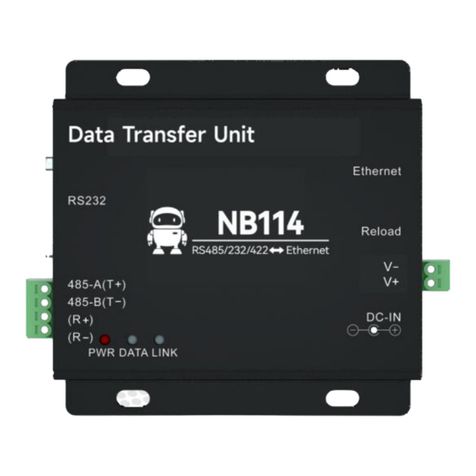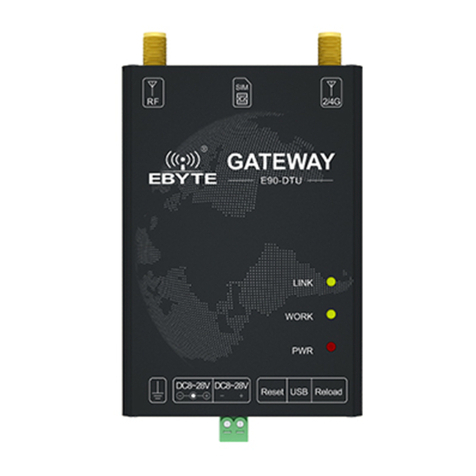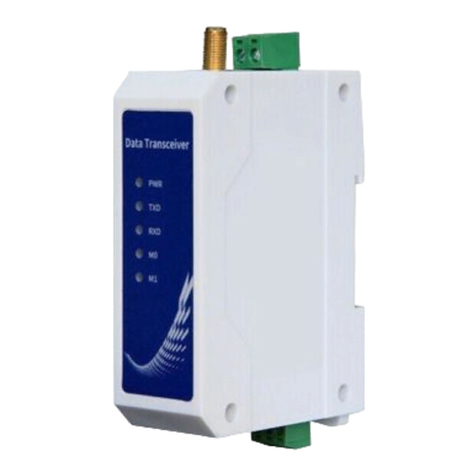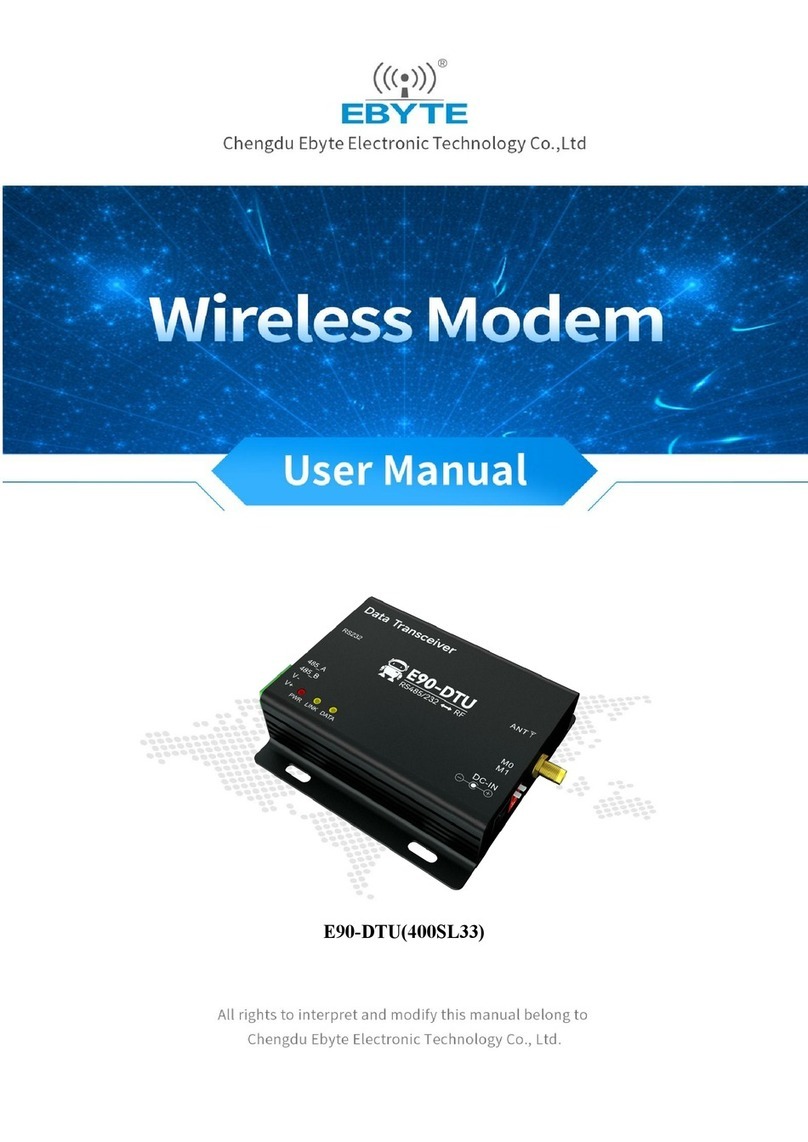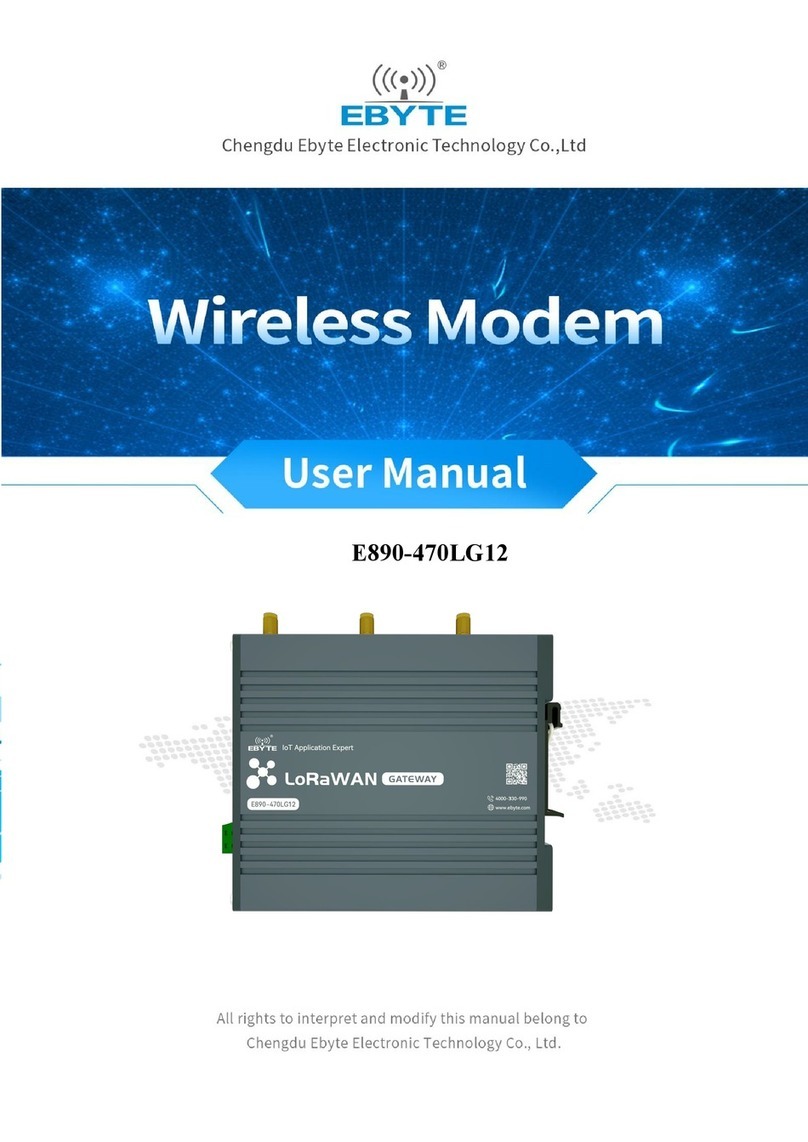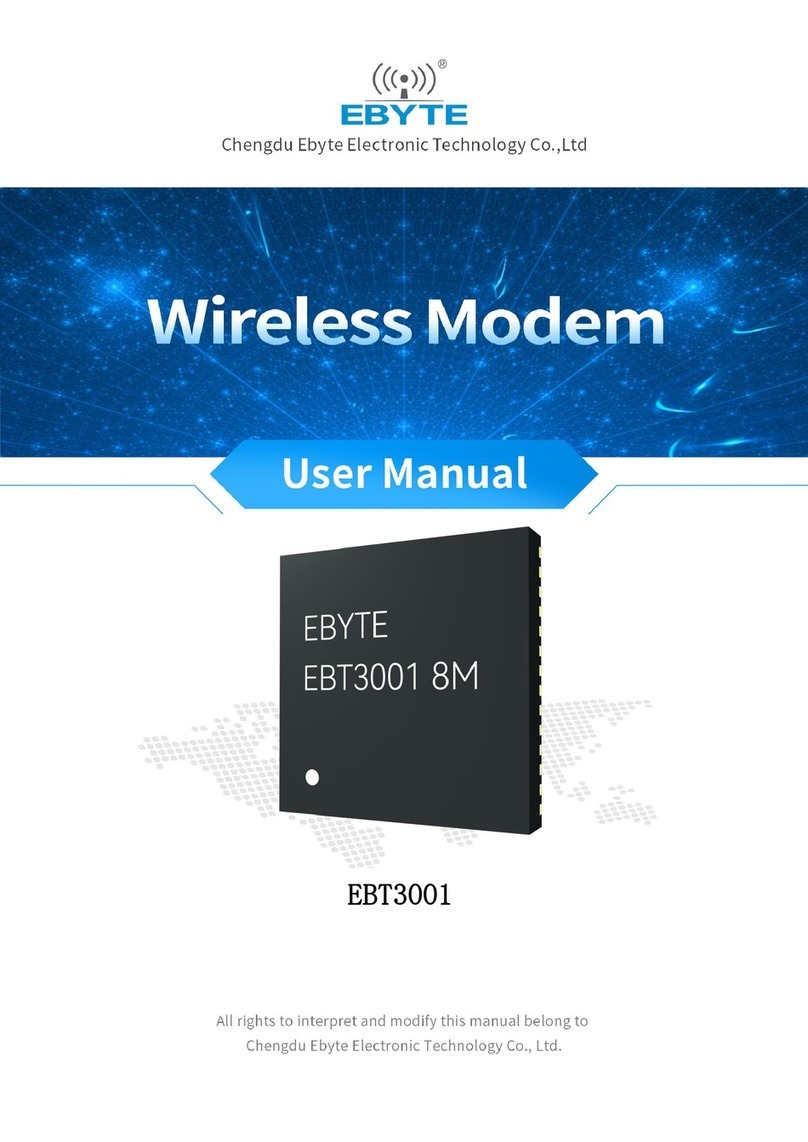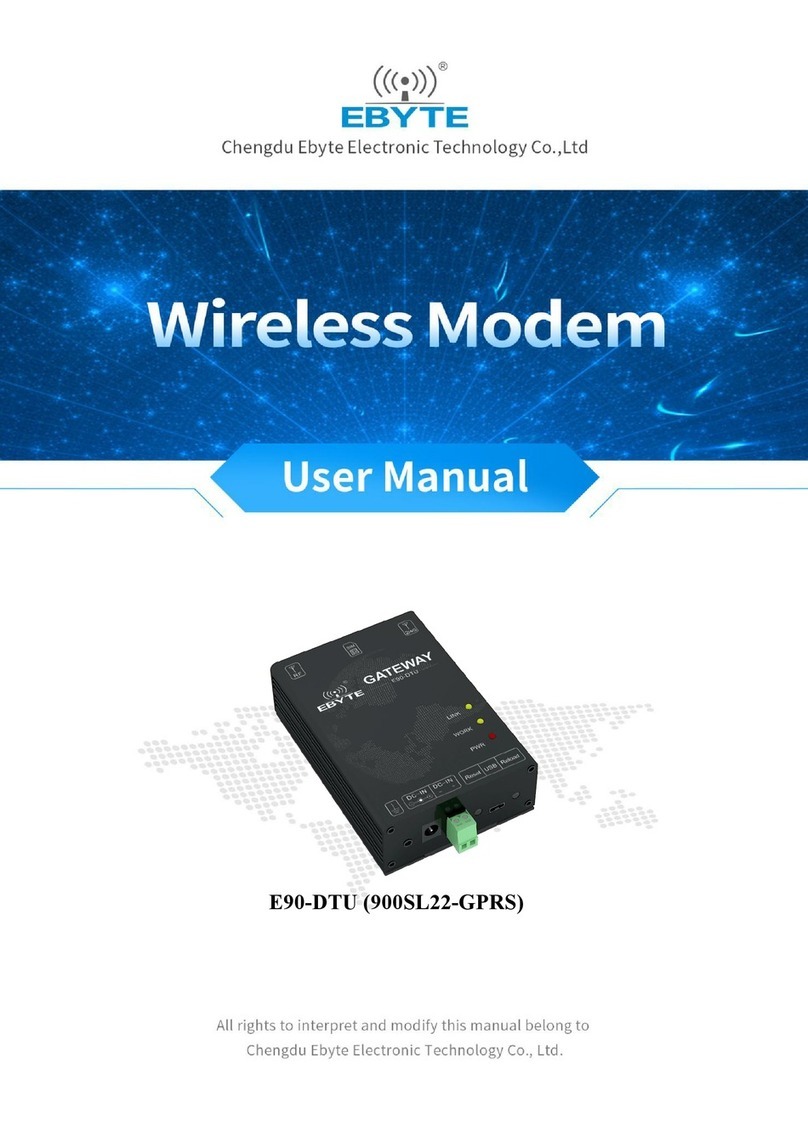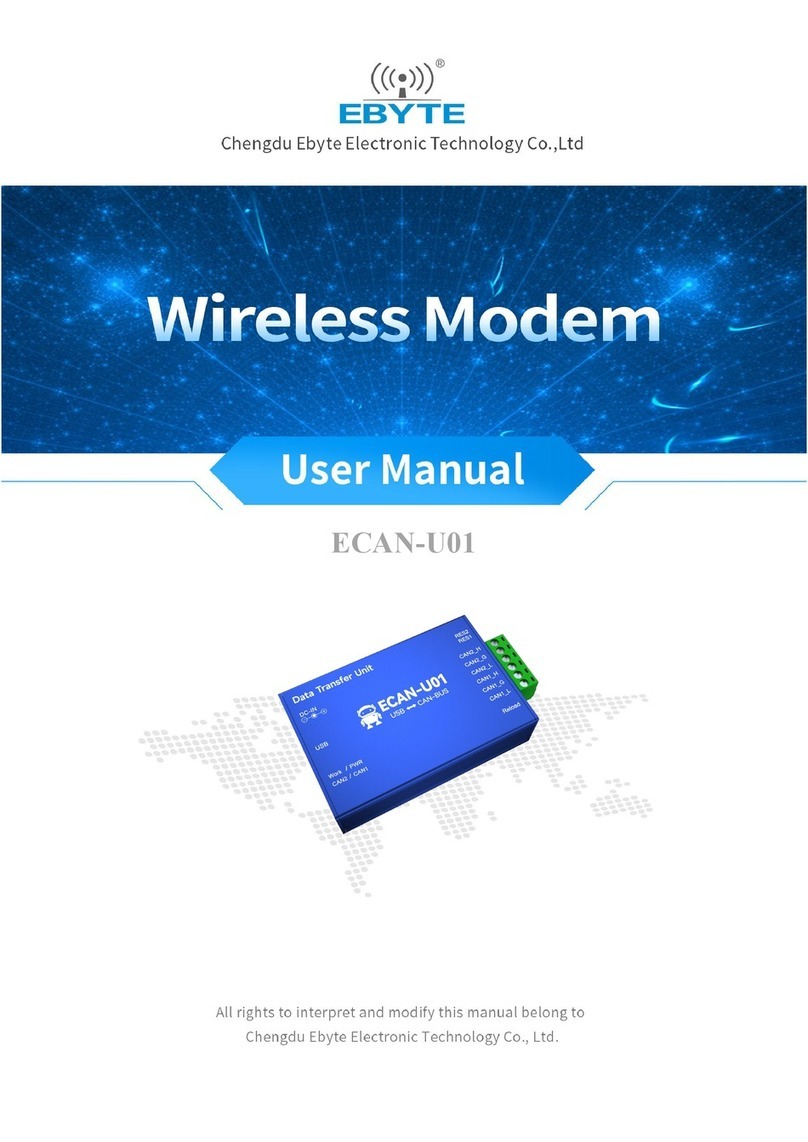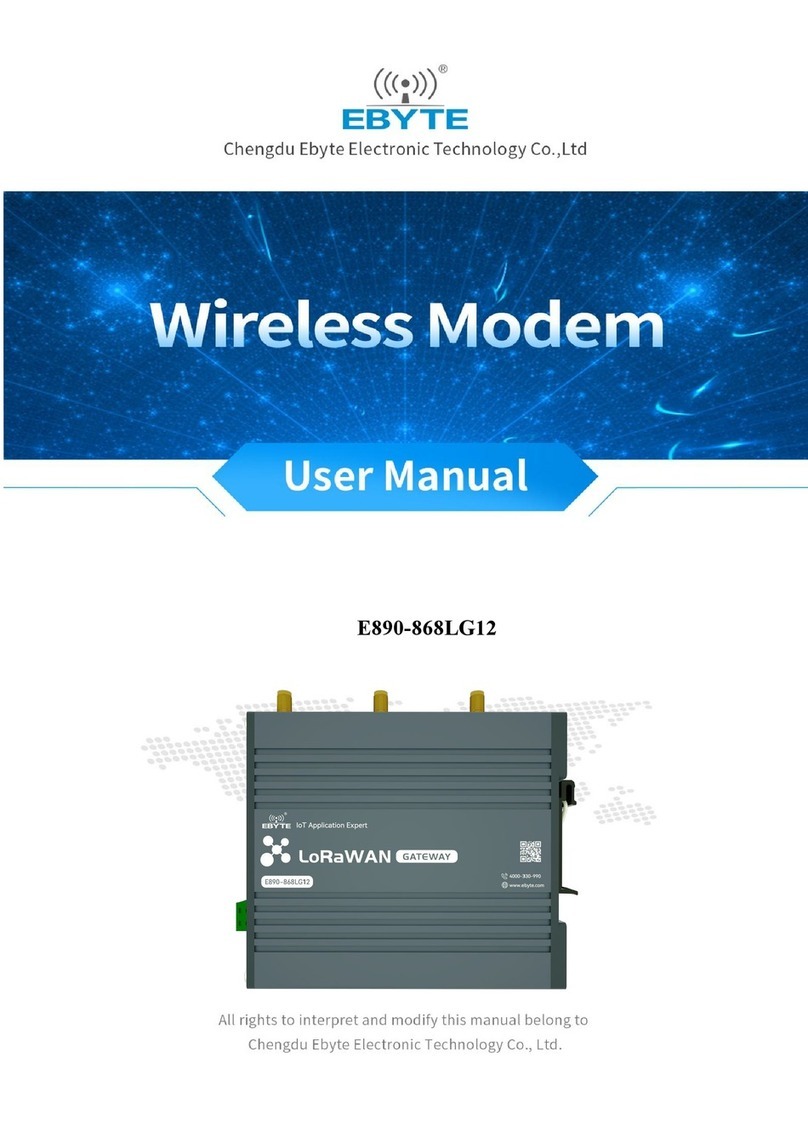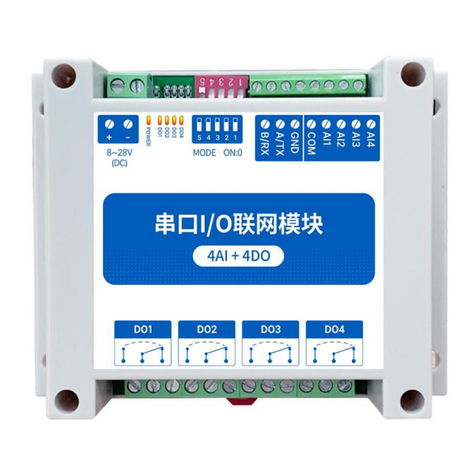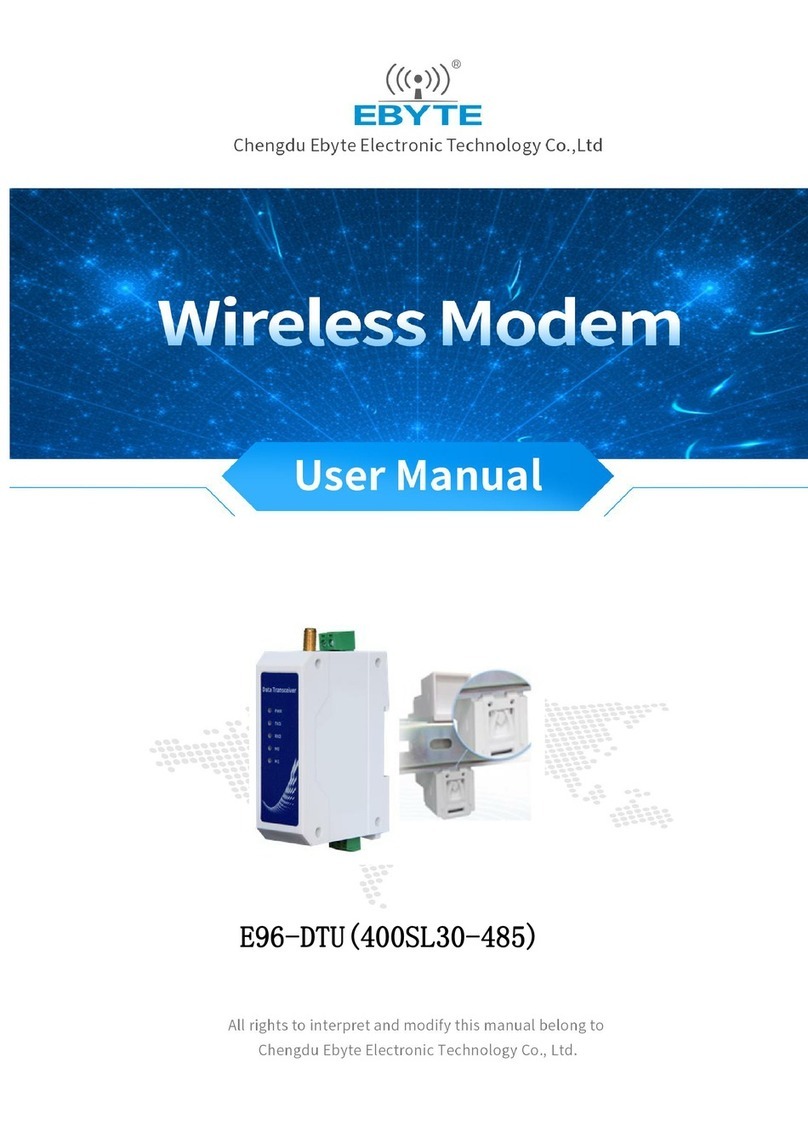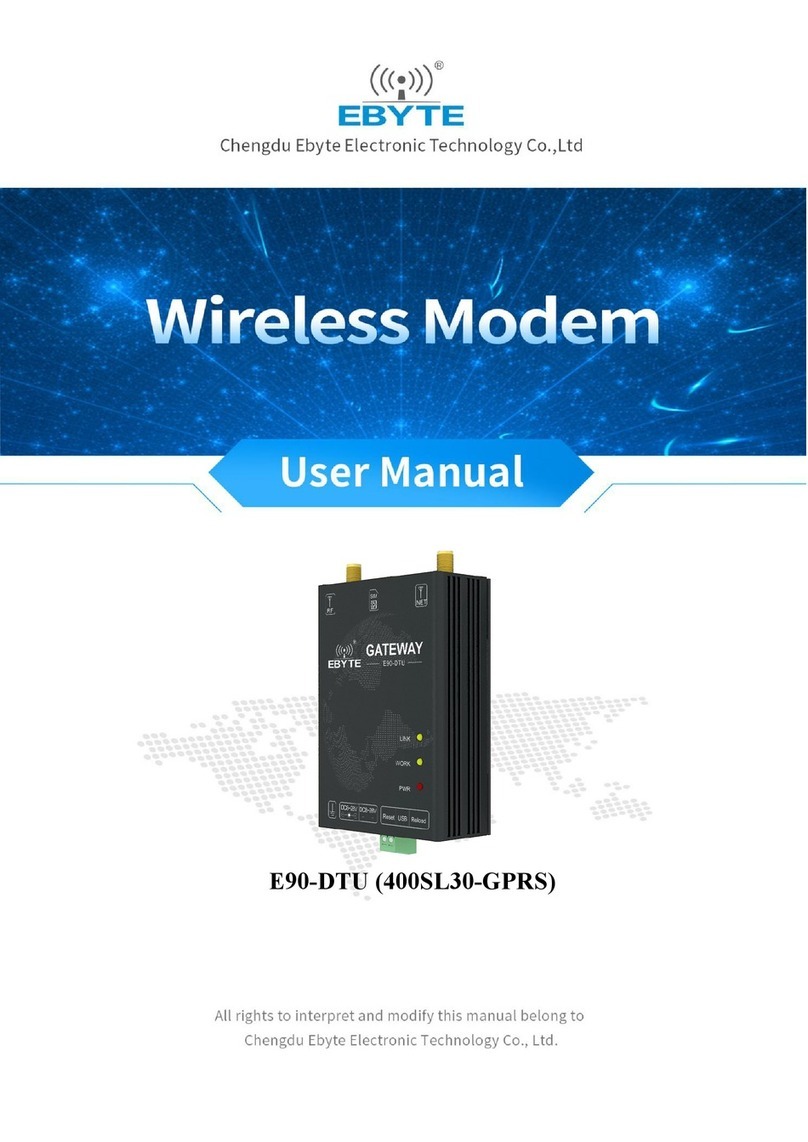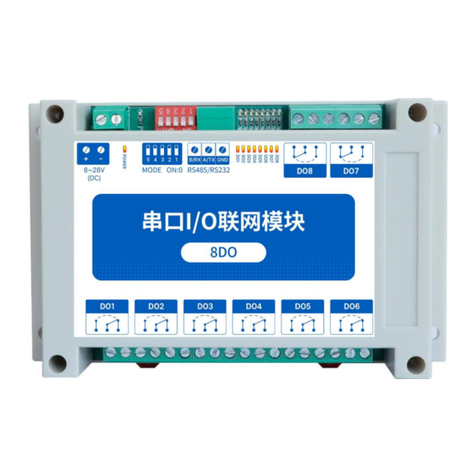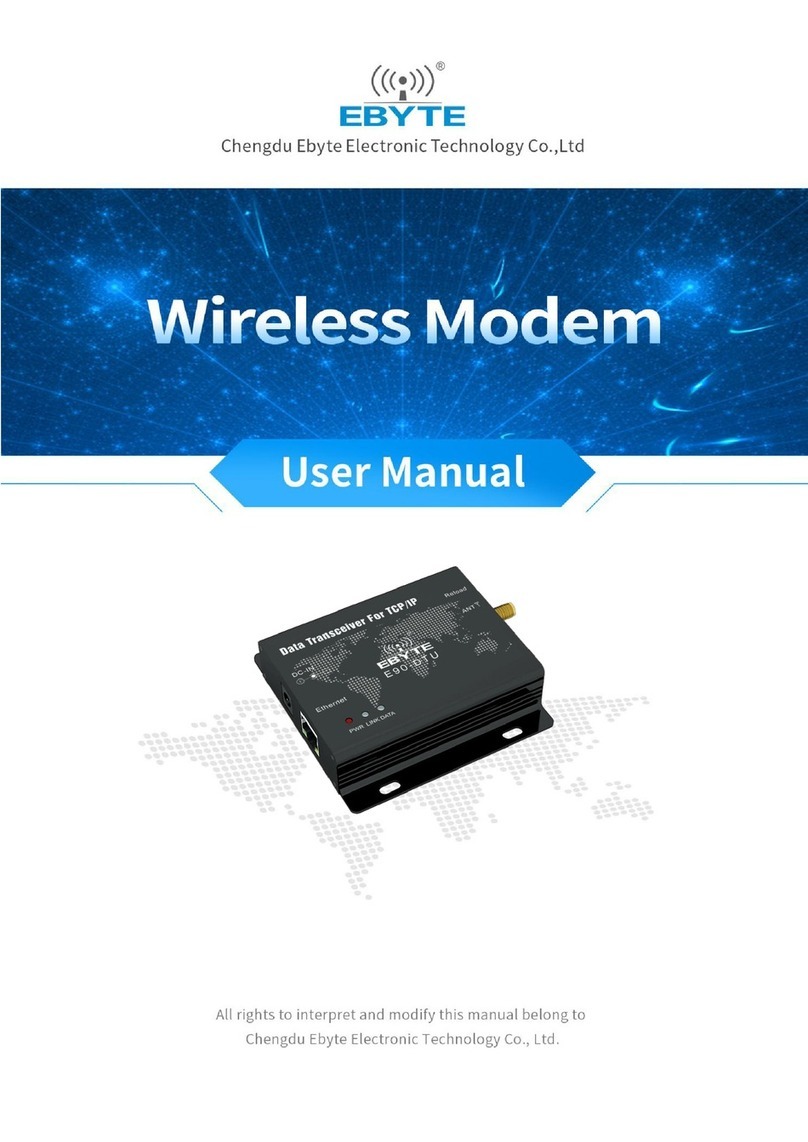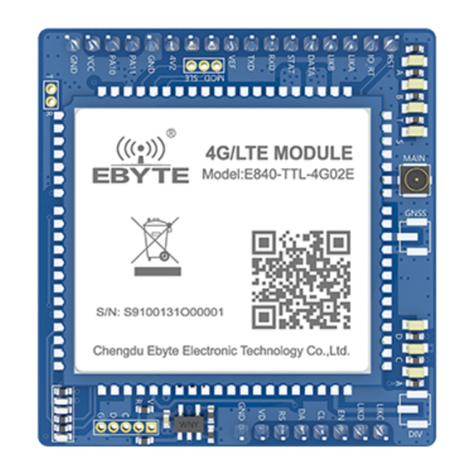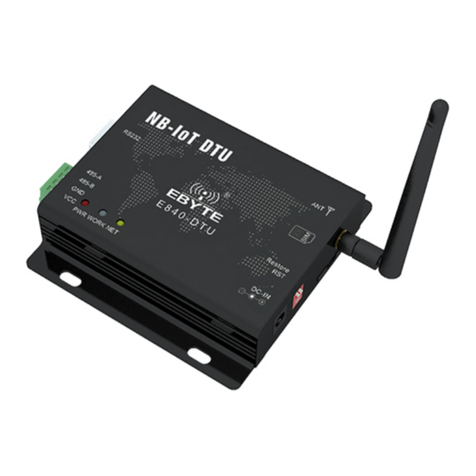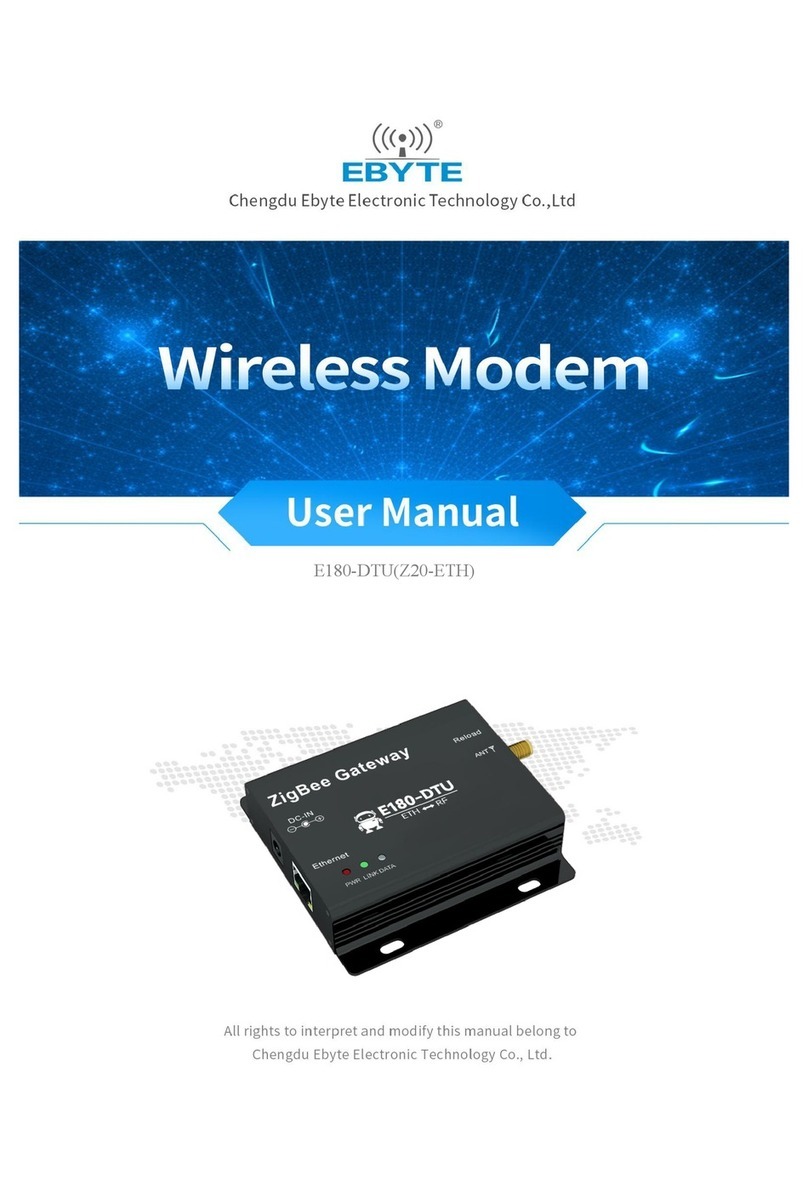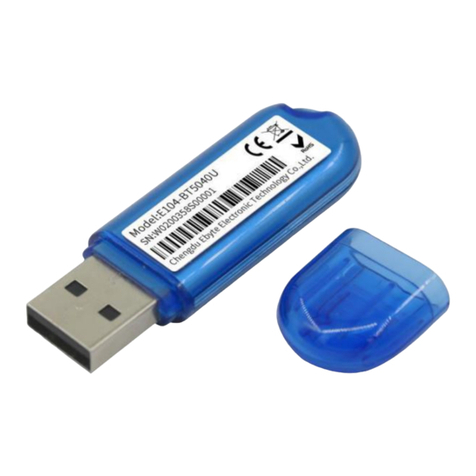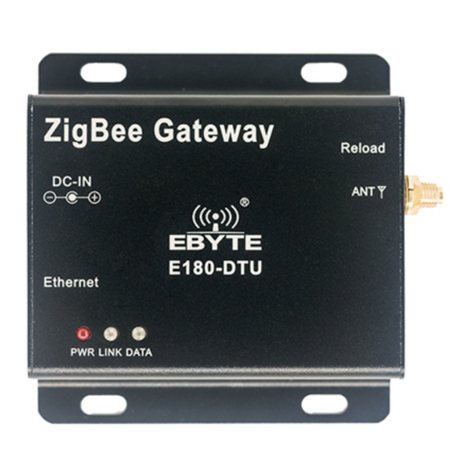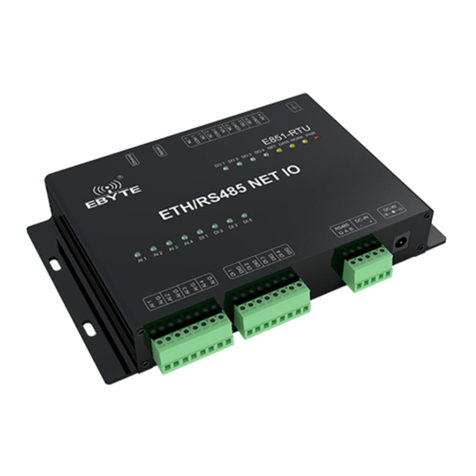
Chengdu Ebyte Electronic Technology Co., Ltd. NB144ES User Manual
Copyright ©2012,Chengdu Ebyte Electronic Technology Co., Ltd. 1
Contents
Disclaimer and Copyright Notice ...................................................................................................................................3
1 Introduction ................................................................................................................................................................. 4
1.1Features ..................................................................................................................................................................4
2 Quick Start ...................................................................................................................................................................5
2.1 Hardware List ....................................................................................................................................................... 5
2.2 Software ................................................................................................................................................................6
2.3 Device default parameter test steps ......................................................................................................................6
2.3.1 Connecting Hardware ................................................................................................................................6
2.3.2 Device parameter configuration ................................................................................................................7
2.3.3 Turn off the computer firewall .................................................................................................................. 8
2.3.4 Open the "Serial Debug Assistant" ........................................................................................................... 8
2.3.5 Open network assistant ..............................................................................................................................9
2.3.6 Send and receive data test ......................................................................................................................... 9
3 Parameters ................................................................................................................................................................. 10
3.1 Technical parameters .......................................................................................................................................... 10
3.2 Interface Description .......................................................................................................................................... 11
3.4 Dimensions ......................................................................................................................................................... 15
4 Functions ................................................................................................................................................................... 16
4.1 Correspondence between channel and serial port..............................................................................................16
4.2 Local network parameters .................................................................................................................................. 16
4.2.1 Local IP ................................................................................................................................................... 16
4.2.2 DNS ( domain name resolution ) ............................................................................................................ 16
4.2.3 Network disconnection reconnection cycle ............................................................................................ 17
4.2.4 Timeout restart (no data restart) .............................................................................................................. 17
4.3 Hardware factory reset ....................................................................................................................................... 17
4.4 Device working mode ........................................................................................................................................ 17
4.4.1 TCP Server .............................................................................................................................................. 17
4.4.2 TCP Client ............................................................................................................................................... 18
4.4.3 UDP Server ..............................................................................................................................................18
4.4.4 UDP Client .............................................................................................................................................. 18
4.4.5 HTTP client _ .......................................................................................................................................... 19
4.4.6 MQTT client ............................................................................................................................................22
4.5 Channel port ....................................................................................................................................................... 24
5 Advanced Features .....................................................................................................................................................25
5.1 Heartbeat package and registration package ......................................................................................................25
5.1.1 heartbeat packet .......................................................................................................................................25
5.1.2 registration package .................................................................................................................................25
5.2 short connection ..................................................................................................................................................26
5.3 Serial buffer cleaning ......................................................................................................................................... 26
5.4 Modbus gateway .................................................................................................................................................27
5.4.1 Simple Protocol Conversion ................................................................................................................... 27
5.4.2 multi-host mode .......................................................................................................................................29
